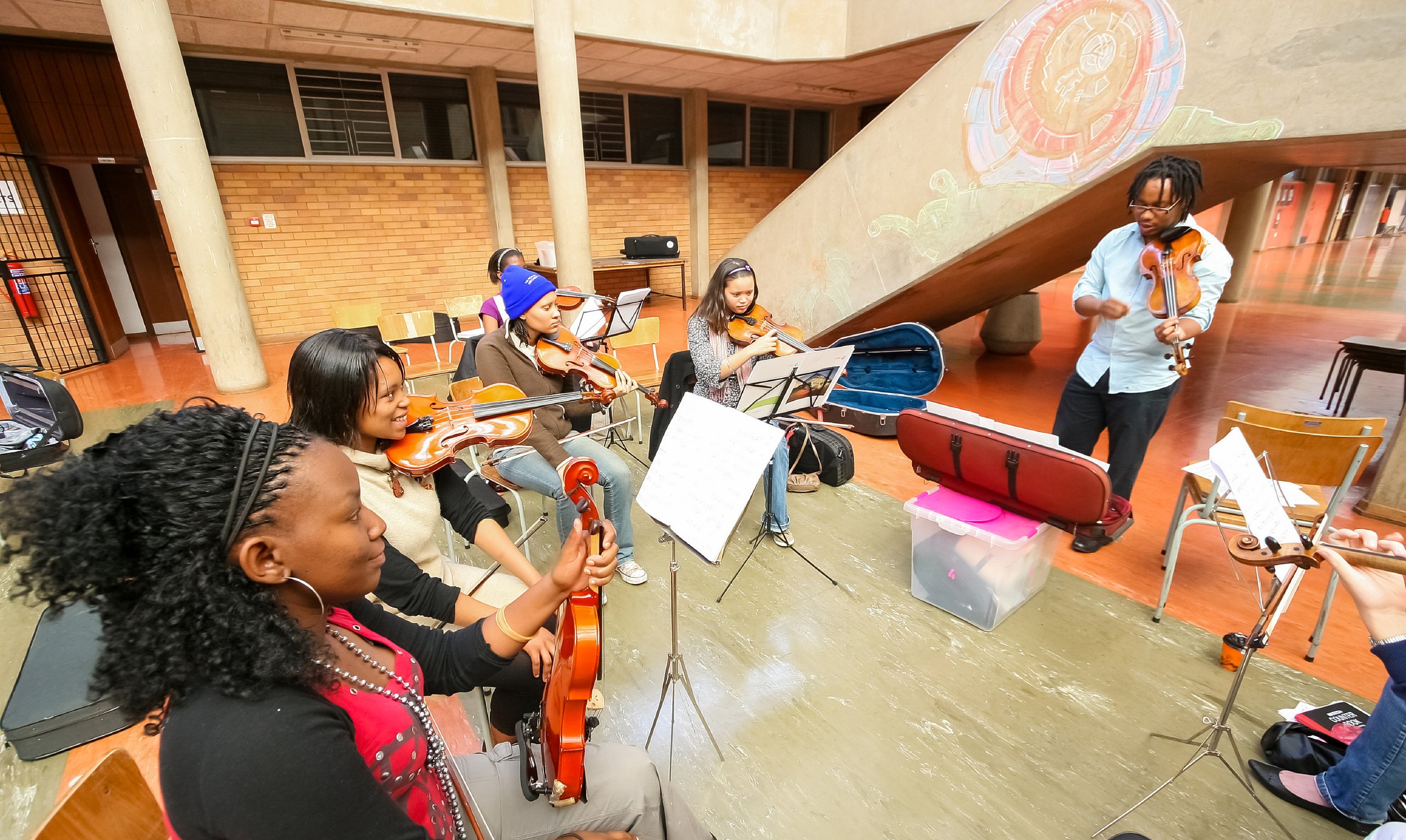
Recruiting and Retaining Black and Latinx Students in String Orchestra Programs
Davis, K. (2021). Recruiting and Retaining Black and Latinx Students in String Orchestra Programs. American String Teacher, 71(1), 17–21. https://doi.org/10.1177/0003131320976093
-
Overview
Recruiting and Retaining Black and Latinx Students in String Orchestra Programs exposes the underrepresentation of Black and Latinx students in string orchestra programs across the county. In a 2016 study by the American League of Orchestras, Black musicians make up 1.8% of the membership of professional orchestras while Latinx make up 2.5%. Community socioeconomic status and school budget play a large role in a school’s ability to offer an orchestra program. The race or ethnicity of string teachers can also influence the recruitment and retention of students – especially when 64% are women and 92% are White, Non-Hispanic (Smith, Mick, and Alexander, 2018; Davis 2021). Students are not seeing themselves in an orchestra teacher/professional role. Davis poses the question, “How can we encourage more students, especially minority students, to become string educators?” (p. 18).
The US census projection show that Whites will make up 49.7% of the population while Blacks, Latinx, Asians, and Other minorities will make up 50.3 % to reach “majority-minority” status in 2045 (Colby and Ortman, 2015; Davis, 2021). This shift in our nation’s demography require educators to be knowledgeable about their students’ cultural background, community, and identities. Educators must make conscious decisions about musical programs that represent all cultures equally. -
So What?
Davis recommends the following strategies in retaining Black and Latinx students: accept beginners at the high school level, offer a hands-on approach to orchestra instruments in music appreciation/general music class, learn more about your orchestra students outside of the orchestra classroom, show your human side (that we are not above making mistakes), make orchestra a second home for students – a place of inclusivity, and bring in guest artists and clinicians of different backgrounds.
-
Alex's Riff
Discussion and action to improve diversity, equity, and inclusion needs to happen immediately. Educators should take Davis’ recommended steps in their classrooms right away instead of waiting for an initiative from other sources. Educators must be willing to cut the red tape and enact change. If we reach “majority-minority” status in 2045 and only a few percent of Black and Latinx musicians enter professional orchestras, school orchestra programs will become obsolete because orchestra programs will be irrelevant to the majority of this nation’s population.